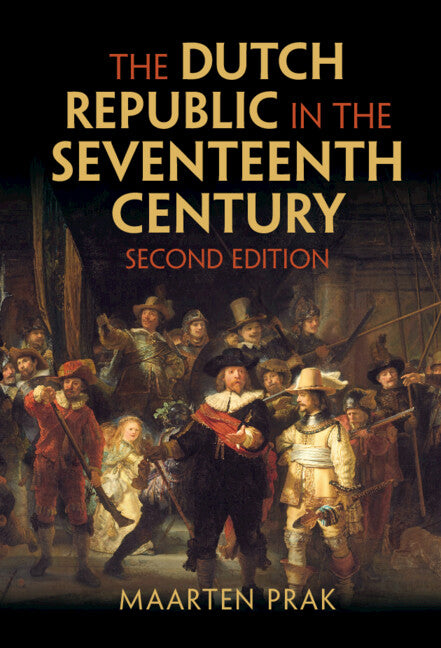Freshly Printed - allow 8 days lead
Couldn't load pickup availability
The Dutch Republic in the Seventeenth Century
Substantially revised second edition of the leading textbook on the Dutch Republic, including new chapters on language and literature, and slavery.
Maarten Prak (Author), Diane Webb (Translated by)
9781009240567, Cambridge University Press
Paperback / softback, published 19 January 2023
340 pages
22.8 x 15.2 x 1.7 cm, 0.48 kg
'An indispensable history of that remarkable early modern political formation, the Dutch Republic. This is a magisterial account of the social, political, economic, and cultural circumstances under which it came into being. For its breadth, clarity of exposition and up-to-date responses to current research, I cannot recommend it highly enough.' Claudia Swan, Washington University in St. Louis
Rembrandt, Hals and Vermeer are still household names, even though they died over three hundred years ago. In their lifetimes they witnessed the extraordinary consolidation of the newly independent Dutch Republic and its emergence as one of the richest nations on earth. As one contemporary wrote in 1673: the Dutch were 'the envy of some, the fear of others, and the wonder of all their neighbours'. During the Dutch Golden Age, the arts blossomed and the country became a haven of religious tolerance. However, despite being self-proclaimed champions of freedom, the Dutch conquered communities in America, Africa and Asia and were heavily involved in both slavery and the slave trade on three continents. This substantially revised second edition of the leading textbook on the Dutch Republic includes a new chapter exploring slavery and its legacy, as well as a new chapter on language and literature.
Introduction: the Enigma of the Republic
I. War without End: 1. Turbulent beginnings
2. A new country (1609–1650)
3. A world power (1650–1713)
4. The armed forces
II. Golden Age: Economy and Society: 5. A market economy
6. Worldwide trading network
7. Riches
8. Toil and trouble
III. Unity and Discord: Politics and Governance: 9. Community
10. The authorities
11. A dissonant chorus
12. Freedom against all odds
IV. An Urban Society: 13. The urban landscape
14. A lettered land
15. Religious pluralism
16. A new approach to science and philosophy
17. Paintings, paintings everywhere
Conclusion: the end of the golden age.
Subject Areas: Social & cultural history [HBTB], Early modern history: c 1450/1500 to c 1700 [HBLH], European history [HBJD]


